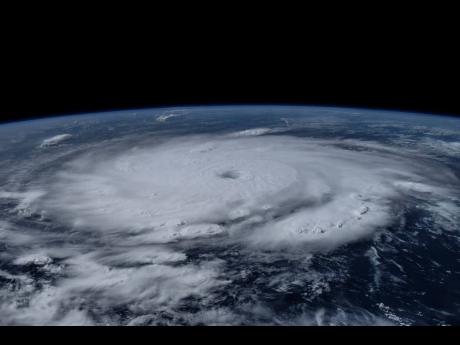Editorial | Beryl and small things
There is perhaps little else the Government and its agencies could have done to mobilise Jamaicans for the passage of Hurricane Beryl on Wednesday.
As forecast, the island took a thumping from the Category 4 storm, after the havoc it caused in the southeastern Caribbean. Fortuitously, the situation was not as cruel to Jamaica as initially forecast.
That does not mean that things are not bad, just that they could have been worse.
The authorities, however, are only beginning to assess Beryl’s full impact with respect to damage to homes and infrastructure, consequences of the flooding caused by the millions of tonnes of rain with which the island was doused, and the hurricane’s effect on agriculture and other sectors of the economy.
Part of the reason for this containment of the consequences of Beryl’s rage, especially with respect to casualties, is the relatively sophisticated disaster preparedness, mitigation and relief apparatus Jamaica has developed, especially since the devastation of Hurricane Gilbert in 1988. That hurricane cost Jamaica 90 per cent of its GDP and 45 lives.
But it also helps that Jamaicans now build better than 35 years ago, with respect to formal settlements.
SAFETY DIRECTIVES
In Gilbert, 80 per cent of the island’s houses lost their roofs; 100,000 of them could not be repaired. Very few of those roofs had the appropriate hurricane straps that are common today.
Further, while the emerging disaster preparedness and relief system worked decently during Gilbert, it provided the framework upon which the current, expanded Office of Disaster Preparedness and Emergency Management (ODPEM) was built. Generally, ODPEM, operating with a modern regulatory system, has been good at coordinating multiple agencies – across the Government and in civil society – in preparing for, and responding to, disasters.
Indeed, few Jamaicans could claim not to be aware of the seriousness of the threats posed by Hurricane Beryl, or, for that matter, any storm to threaten Jamaica in recent decades.
And for people who live in precarious circumstances, or in dangerous environments, there are opportunities to find relief in official shelters. The location of scores of these were published in the days leading up to Beryl’s passage.
Further, in the eve of the passage of the storm, Prime Minister Andrew Holness pre-emptively declared the entirety of Jamaica a disaster area, giving the Government greater flexibility to deal with any eventuality.
The prime minister also pleaded with Jamaicans to adhere to safety directives and to be astute about their individual situations. Said Mr Holness: “We urge all Jamaicans to comply with notices to evacuate if and when they are issued.
“However, even without the issuance of a notice, if you live in a low-lying area and the area is historically prone to flooding and landslides, or if you live on the banks of a river or a gully, I implore you to evacuate to a shelter or to safer ground.”
The point is, disaster preparedness and mitigation systems are in place, and, given Jamaica’s economic situation, they work reasonably well.
INADEQUATE DRAINAGE SYSTEM
Notwithstanding, there are areas in which the Government can do much better, and at no great cost. That, however, requires commitment to a mission of doing small things consistently, and getting them right.
That requires a shift in the perspective of Jamaican governments that may be bored with day-to-day, functional ideas.
Their penchant, therefore, is to pursue big, shiny projects; to see value in terms of costs and not sufficiently in the returns to the society.
Take the matter of the flooding associated with Beryl, earlier storms, and just heavy rainfall. This, in part, is the consequence of an inadequate drainage system nationally, as well as a less-than-robust oversight of, and thoughtfulness in development and spatial planning.
But consistency in small failures contribute, too. Such as the failure to consistently clean drains and gullies and trimming verges and so on.
The Atlantic hurricane season begins in June and ends in November. It has been so for millennia; and notoriously known to be so.
Yet, each year there is a scramble to clean the gullies and drains as a hurricane approaches, and there are outcries by some from communities or local officials.
This week, as Beryl bore down on Jamaica, it was the turn of Leon Thomas, the mayor of Portmore, venting at the National Works Agency (NWA) for failing to clean “critical drains” ahead of the storm season. The NWA got around to doing some work.
In-between these emergency cleaning jobs and the next major storm, flooding recurs because the gullies and drains are again clogged with garbage, for which the solid waste management people vilify communities.
It seems obvious that it would be cheaper to clean drains and gullies regularly as well as periodically train rivers, rather than wait for these exercises to become big, expensive projects. Which is usually when there is a clear and present danger to people’s homes and infrastructure.
The same applies to pruning trees planted on the sidewalks and the medians of the island’s cities and towns, but left to grow unkempt and hazardous.
This antithesis to logic seems though, not to make sense where it matters.


